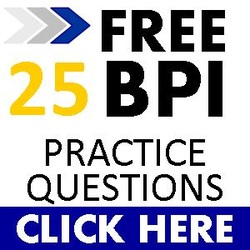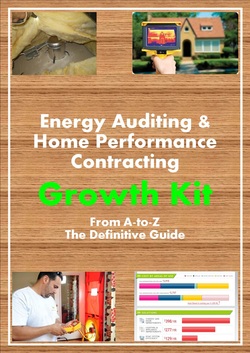Passing the BPI Exam With Energy Auditor Training
BPI PRACTICE EXAMPUT YOUR HOME PERFORMANCE BUSINESS ON ROCKET FUEL |
BPI Written Exam - Section 2 Buildings and Their Systems
A good understanding of thermal boundaries is necessary to understand this section. For a review, visit Section 2a.4 on Thermal boundaries and insulation applications. When defining your thermal boundary in the field it helps to walk the inside of the house first and map out all the changes in ceiling height. Lots of times it's obvious that two soffits are connected at the corner or wrap around an entire room, but when you are in the attic it can be obviously less clear where soffits run with insulation over everything, tight spots and balancing on the studs. Sometimes you will find soffits so big, you may to choose to insulate the attic floor and kneewalls rather than try capping it. Be sure your auditors know what you want to cap and what you want to insulate though or they will may their own calls and your installers won't be too happy with them when left with a job much harder than it ever had to be.
For duct sealing and sheet metal work, lots of times its just a matter of getting the experience to know what is best to do. Expect to improvise in the field as HVAC contractors can really leave you with a mess when no one is checking their work. After 2 years in the field though, you should be able to handle whatever is thrown at you or your crew. The ability to improvise and problem solve is also a matter of you or your crew caring enough to figure something out. If they don't care, you are in for a bumpy ride until you let them go. For sheet metal work, having the right tools certainly helps like right and left angle snips, crimps, sheet metal cutters and self tapping metal screws and magnetic drill bits. Depending on how you charge your jobs, you can insulate kneewalls with strapped batts after air sealing, or use 2" foam board to enclose and seal the kneewall completely. Upgrade California requires their home performance contractors to encapsulate their kneewalls with foam board and pookie. In Arizona, we are only required to seal the top plate and align fiberglass batts and secure with straps. It also makes sense to insulate kneewalls and attic hatch up to the same R-value you are insulating the attic floor. In crawl spaces, the location of the air handler, climate and your regional best practices will dictate whether you recommend spray foam along the underbelly floor or adding a vapor barrier and sealing off the crawl space from the outside. Next Section2a. Building Components
2b. Conservation Strategies
2c. Comprehensive Building Assessment Process
2d. Design considerations
|

